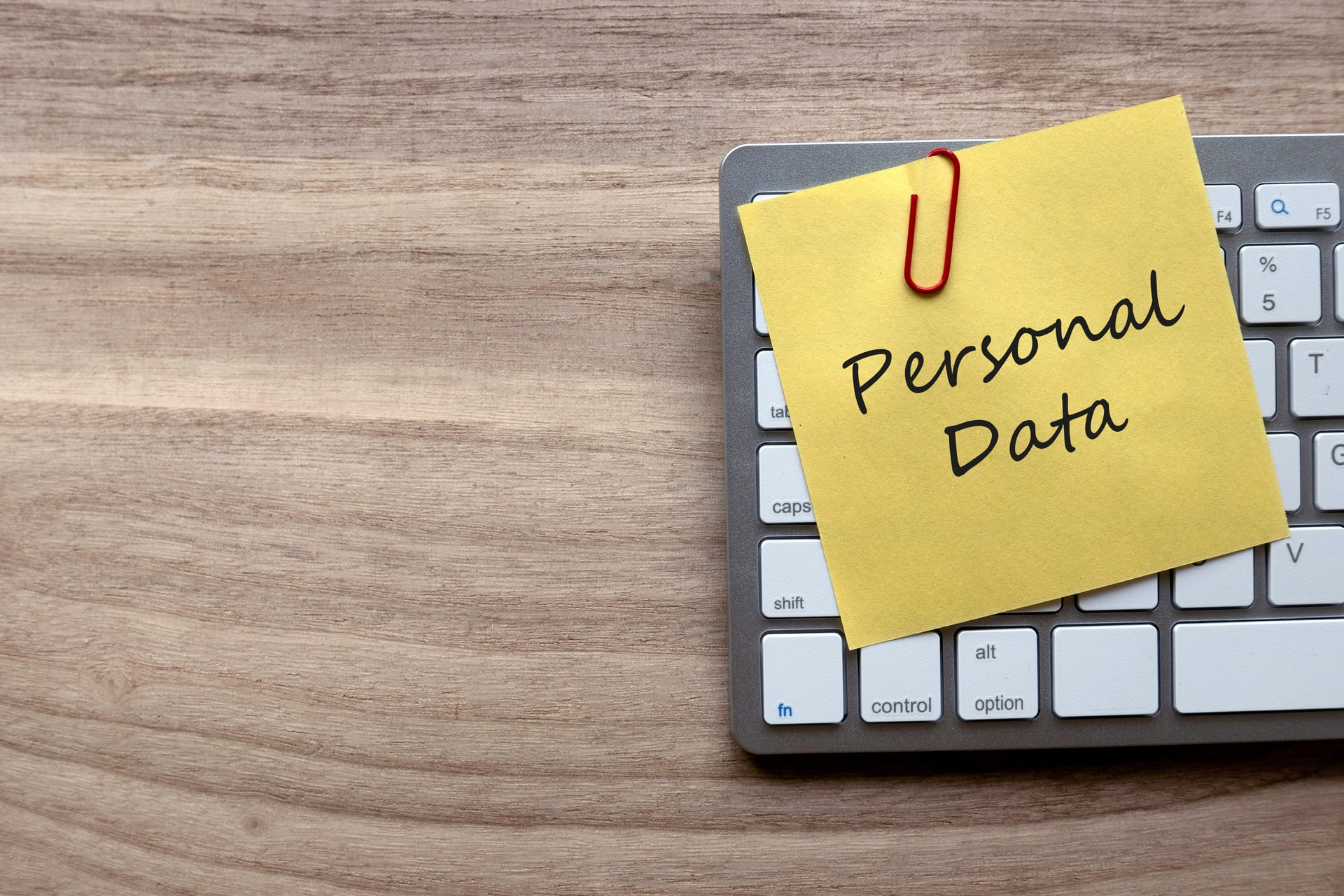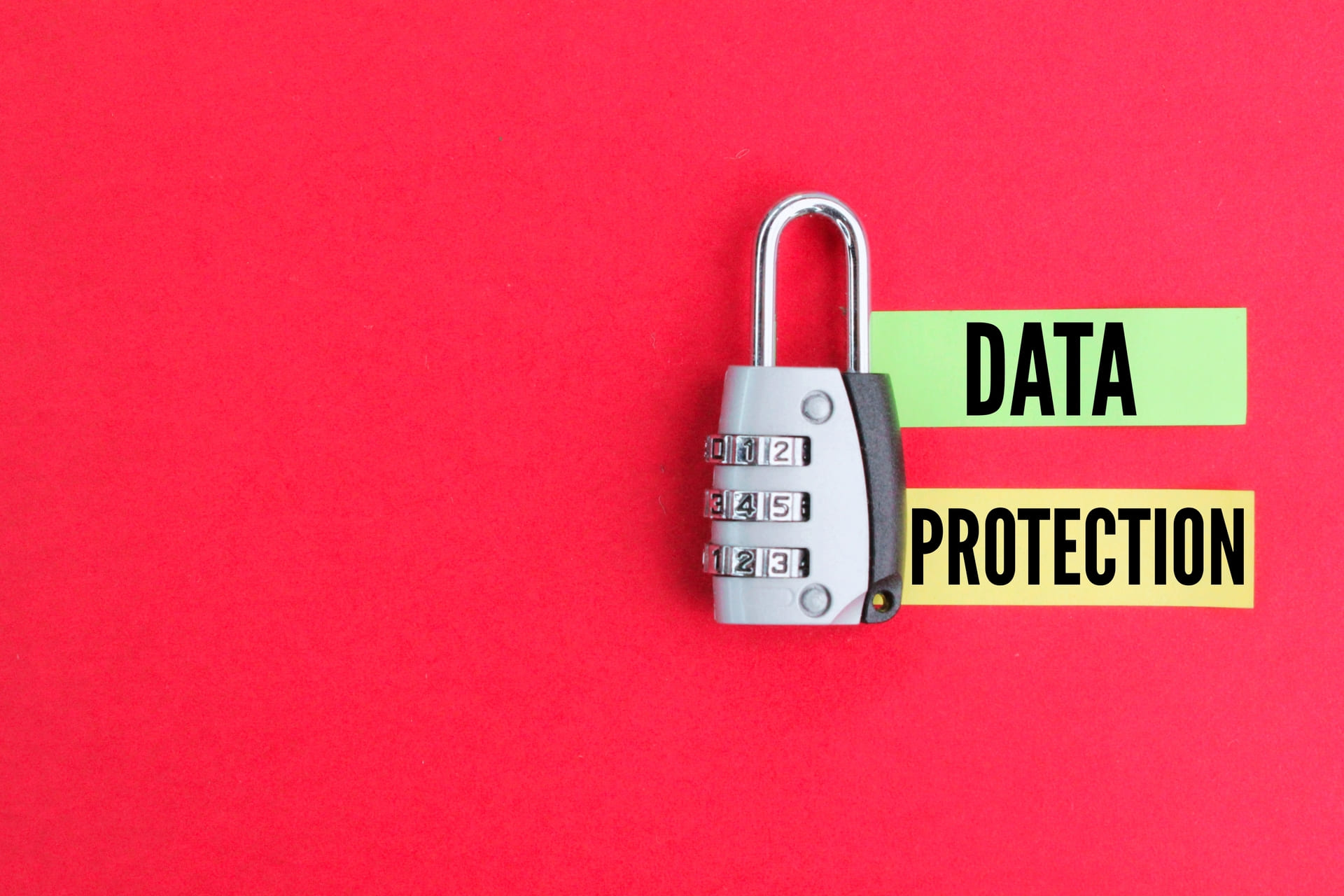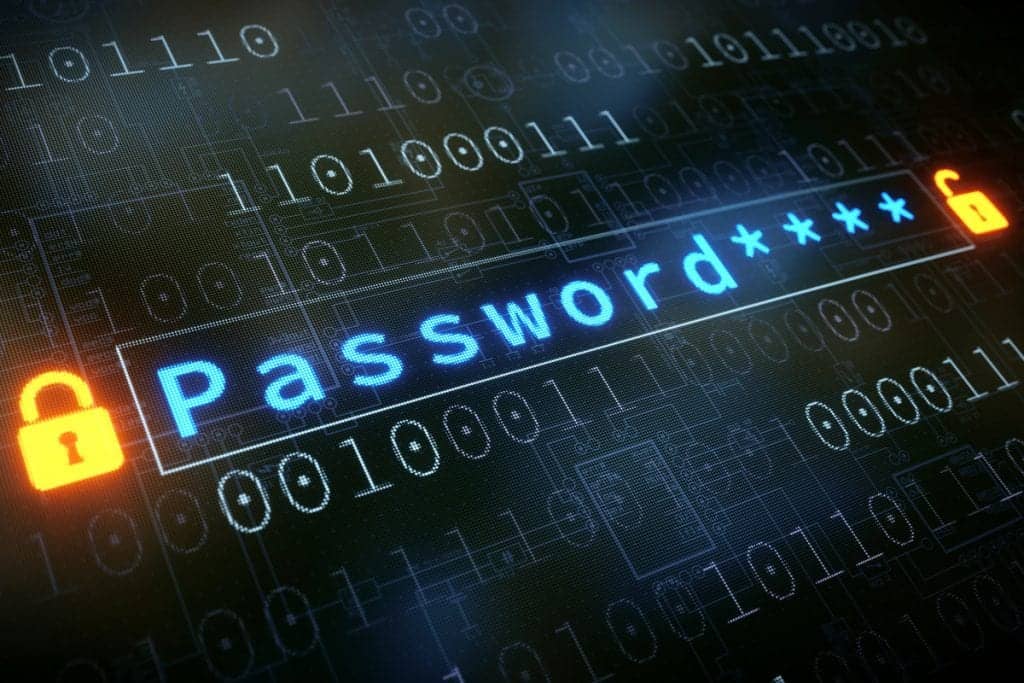Personally identifiable information (PII) in cybersecurity refers to any data that can identify, contact, or locate a specific individual, making it a prime target for cybercriminals and subject to strict regulatory requirements.
For small and medium-sized businesses, knowing PII isn’t just about compliance; it’s about survival. When a data breach exposes your customers’ personal information, the consequences extend far beyond immediate financial losses.
Your business faces regulatory fines, legal liability, damaged reputation, and the devastating loss of customer trust that can take years to rebuild.
The reality is stark: businesses that fail to properly protect PII face significant financial and operational consequences, with small businesses often unable to recover from the damage.
With over 25 years of experience protecting businesses from cyber threats, CMIT Solutions specializes in helping businesses understand and protect PII in cyber security through comprehensive managed IT services and cybersecurity solutions.
Our cybersecurity services protect your business from costly PII breaches and ensure regulatory compliance.
What is Considered PII: Direct vs. Indirect Identifiers
⚠️ Many businesses underestimate how easily indirect identifiers can become personally identifiable when combined, leaving them unknowingly exposed to compliance risks.
Knowing the types of data that constitute PII helps businesses properly classify and protect sensitive information. The General Data Protection Regulation and other data privacy laws categorize personally identifiable information into two main types:
- Direct identifiers uniquely identify an individual without additional context. Social security numbers, passport numbers, and driver’s license numbers fall into this category because each one corresponds to exactly one person.
- Indirect identifiers become identifying when combined with other information. A person’s place of birth alone doesn’t identify them, but when combined with their age and occupation, it may narrow the field enough to identify a person.
- Biometric data represents a growing category of direct identifiers. Fingerprints, facial recognition data, and voice patterns can definitively identify an individual and are increasingly collected by businesses.
- Digital identifiers include email addresses and usernames that may identify a person. While an email address like “john.smith@email.com” clearly identifies someone, a username like “user12345” requires additional context to become identifying.
- Financial identifiers encompass account numbers, credit card details, and payment information. These not only identify individuals but also provide direct access to their financial resources, making them particularly valuable to cybercriminals.
| Identifier Type | Examples | Risk Level | Regulatory Requirements |
|---|---|---|---|
| Direct | SSN, Passport, Driver’s License | Very High | Strict encryption, access controls |
| Indirect | ZIP Code, Age, Job Title | Moderate | Protection when combined |
| Biometric | Fingerprints, Facial Data | Very High | Enhanced security measures |
| Digital | Email, Username, IP Address | Moderate | Secure transmission protocols |
Examples of Personally Identifiable Information (PII) in Your Business
Different industries handle various types of data that could be used to distinguish a specific individual, and recognizing what constitutes sensitive data in your business context is essential for proper protection:
- Healthcare practices collect protected health information, including patient names, medical record numbers, and treatment details. The Health Insurance Portability and Accountability Act specifically governs how this information must be protected.
- Financial services firms handle social security numbers, account information, and credit reports that require strict data security measures. These businesses often fall under multiple regulatory frameworks, including state privacy laws.
- Legal firms maintain client information, case details, and financial records that could identify an individual and their sensitive circumstances. Attorney-client privilege doesn’t eliminate the need for cybersecurity protections.
- Retail businesses store customer names, addresses, phone numbers, and payment card information for transactions and marketing purposes. Even basic customer databases contain enough information to enable identity theft if compromised.
- Manufacturing companies collect employee personal data, including emergency contacts, payroll information, and benefits enrollment details. This employee data requires the same protection as customer information.
- Professional services firms accumulate client contact information, project details, and billing records that combine to create detailed individual profiles. The aggregation of this business data often creates more comprehensive PII than companies realize.
Hypothetical Scenario: A local accounting firm discovers that their client database, containing names, social security numbers, and tax information, was accessed by unauthorized users through a phishing attack targeting an employee’s email account. The breach exposed personal data for over 1,200 clients, resulting in regulatory investigations and significant reputation damage that took three years to overcome.
Elements of PII: What Data Needs Protection
The elements that constitute personally identifiable information extend beyond obvious identifiers to include any information that can be used to distinguish or trace an individual’s identity. Modern information technology has expanded what data is considered PII, particularly when relevant data is combined with other available information.
Traditional PII elements include full names, addresses, phone numbers, and social security numbers. However, the digital age has introduced new categories of identifying information. Geolocation data from mobile devices can reveal home and work addresses, daily routines, and personal relationships.
Even aggregated anonymous data can become PII when sophisticated analytics tools are applied to identify patterns that point to specific individuals.
Electronic PHI represents a specialized category of PII that includes any health information that can be linked to an individual. This includes not just medical records but also health insurance information, billing records, and any communication about health services.
The distinction between PHI and general PII is essential for healthcare-related businesses, as protected health information requires additional safeguards under federal regulations.
Context plays a critical role in determining what information becomes PII. An employee directory listing names and office phone numbers might not be considered sensitive data, but the same names combined with home addresses and salary information would constitute highly sensitive PII requiring enhanced protection measures.
| PII Category | Sensitivity Level | Common Business Use | Protection Requirements |
|---|---|---|---|
| Identity Core | Very High | Customer accounts, employee records | Encryption, access controls, audit logs |
| Financial | Very High | Payment processing, payroll | PCI-DSS compliance, secure transmission |
| Health | Very High | Employee benefits, medical services | HIPAA compliance, enhanced security |
| Contact | Moderate | Marketing, communication | Secure databases, consent management |
| Behavioral | Moderate | Analytics, personalization | Data minimization, anonymization |
| Demographic | Low-Moderate | Market research, targeting | Aggregation, limited access |
The National Institute of Standards and Technology provides guidance on data classification that helps businesses understand their obligations for different types of information. However, the rapid evolution of data analytics means that information previously considered non-PII may now require protection as technology advances.
From data encryption to access control, our cybersecurity experts help you proactively secure sensitive information. Contact our team to start building a resilient defense against PII-related threats.
Is PII Always Confidential Information?
No, not all personally identifiable information qualifies as confidential information, and the distinction depends largely on context, availability, and potential for harm. Some PII is publicly available through directories, property records, or social media, while other personal data requires strict confidentiality to prevent identity theft or privacy violations.
⚖️ Not all PII is treated equally. The distinction between sensitive and non-sensitive PII determines the level of protection legally required.
Public records often contain PII such as names, addresses, and property ownership information. This data, while personally identifying, isn’t considered confidential because it’s intentionally made available to the public. However, when this publicly available information is combined with other data, it can create a comprehensive profile that becomes sensitive and requires protection.
The concept of sensitive versus non-sensitive PII helps businesses understand their protection obligations. Non-sensitive PII typically refers to information that’s publicly available or wouldn’t cause significant harm if disclosed. Examples include business email addresses listed on company websites, professional titles, or general demographic information used for market research.
Sensitive PII, conversely, includes any information that could facilitate identity theft, financial fraud, or significant personal harm if compromised. Social security numbers, financial account information, medical records, and detailed personal profiles fall into this category regardless of how they were obtained or stored.
To determine PII sensitivity levels, consider three factors:
- Is the information publicly available through legitimate sources?
- Could unauthorized disclosure cause financial or personal harm?
- Does the information fall under specific regulatory requirements?
If you answer “yes” to questions 2 or 3, treat the data as sensitive PII requiring enhanced protection.
Consider an employee directory with names and office phone numbers versus a database with names and home addresses. The office directory represents non-sensitive PII because it serves a legitimate business function and the information is typically available through other channels.
However, the home address database contains sensitive information that could enable stalking, harassment, or other harmful activities if misused.
The distinction becomes more complex with digital information. An email address alone might not seem sensitive, but when combined with login patterns, purchase history, or personal preferences, it becomes part of a profile that requires protection. This is why data privacy regulations increasingly focus on the potential for information to be used to identify rather than just the information itself.
PII Data Security: Regulatory Requirements for Businesses
Modern businesses must manage a complex landscape of data privacy laws that govern how they collect, store, and protect personally identifiable information. These regulations vary by jurisdiction, industry, and the type of data handled, creating compliance challenges for organizations operating across multiple locations or serving diverse customer bases.
- The General Data Protection Regulation establishes the most comprehensive data protection framework globally. GDPR compliance applies to any business processing personal data of EU residents, regardless of where the business is located, making it relevant for many US companies.
- State-level privacy laws are rapidly expanding across the United States. California’s Consumer Privacy Act and similar laws in Virginia, Colorado, and other states grant consumers rights over their personal information and impose obligations on businesses.
- Industry-specific regulations address particular types of sensitive data and business operations. Healthcare organizations must comply with the Health Insurance Portability and Accountability Act, while financial institutions face requirements from multiple regulatory bodies.
- Federal privacy laws govern specific sectors and data types. The Privacy Act of 1974 applies to federal agencies, while the Children’s Online Privacy Protection Act regulates data collection from minors across all industries.
- International data transfer regulations restrict how businesses can move personal information across borders. These requirements affect cloud storage decisions, vendor relationships, and global business operations.
| Regulation | Applicability | Key Requirements | Penalty Range |
|---|---|---|---|
| GDPR | EU residents’ data | Consent, data rights, breach notification | Up to 4% global revenue |
| CCPA/CPRA | California consumers | Disclosure, deletion, opt-out rights | Up to $7,500 per violation |
| HIPAA | Healthcare data | Security rule, privacy rule, breach notification | $100 – $1.5M per incident |
| PCI-DSS | Payment card data | Network security, access controls, monitoring | Fines + card brand penalties |
The Federal Trade Commission actively enforces data privacy regulations and has increased scrutiny of business data practices. Recent enforcement actions demonstrate that small and medium-sized businesses aren’t exempt from regulatory attention, making compliance essential for organizations of all sizes.
Knowing these regulatory requirements helps businesses develop appropriate data privacy policies and implement necessary security measures. However, compliance isn’t just about avoiding fines, it’s about building customer trust and protecting business reputation in an increasingly privacy-conscious marketplace.
Worried your business might be vulnerable to a PII breach? Schedule your consultation or call (800) 399-2648 to speak with a certified IT professional and evaluate your cybersecurity posture.
Common Threats to PII: What Your Business Faces
📌 Phishing, ransomware, and vendor breaches are no longer enterprise-only issues. SMBs are primary targets due to limited defense capabilities.
Cyber threats targeting personally identifiable information have evolved significantly, with attackers using increasingly sophisticated methods to steal PII for financial gain, identity theft, and other malicious purposes.
Small and medium-sized businesses face particular risks because they often lack the advanced cybersecurity solutions deployed by larger enterprises while still handling valuable personal data.
Phishing attacks remain one of the most common methods for accessing PII, with cybercriminals crafting convincing emails that trick employees into revealing login credentials or installing malware.
These attacks have become more targeted, using information from social media and business websites to create highly personalized messages that appear legitimate. Once attackers gain initial access, they can move through network systems to locate and extract stored personal information.
Social engineering attacks exploit human psychology rather than technical vulnerabilities to gain access to PII. Attackers may call employees pretending to be IT support, vendors, or even executives to manipulate them into providing access credentials or sensitive information.
These attacks are particularly effective because they bypass technical security controls by targeting the human element of cybersecurity.
Ransomware attacks increasingly focus on stealing data before encrypting systems, creating dual pressure on victims to pay ransoms. Attackers first exfiltrate sensitive information, including personally identifiable information, then encrypt business systems and threaten to release the stolen data if payment isn’t made.
This approach maximizes the impact on businesses that might otherwise recover from backups.
Advanced persistent threats represent sophisticated, long-term attacks often sponsored by criminal organizations or nation-states. These attacks involve careful reconnaissance, gradual system infiltration, and patient data collection over extended periods.
While traditionally focused on government and large corporation targets, these methods are increasingly used against smaller businesses with valuable data.
The emergence of artificial intelligence in cyber attacks creates new risks for PII protection. AI-powered tools can automate the creation of convincing phishing emails, generate deepfake audio for voice-based social engineering, and analyze stolen data to identify high-value targets for further attacks.
These technological advances lower the barrier to entry for cybercriminals while increasing the sophistication of attacks.
Third-party vendor compromises represent an often-overlooked threat vector where attackers target business partners, suppliers, or service providers to gain access to customer data. Many businesses focus on securing their own systems while neglecting to assess the cybersecurity practices of organizations that handle their data, creating vulnerabilities that can be exploited by determined attackers.
Additional reading: what is phishing
PII Information Security: Best Practices for Business Protection
Implementing comprehensive information security measures requires a multi-layered approach that addresses technical controls, administrative policies, and physical security measures. Effective PII protection combines prevention, detection, and response capabilities to create a robust defense against cyber threats while meeting regulatory compliance requirements.
- Data encryption protects personally identifiable information both when data is stored and transmitted across networks. Modern encryption standards ensure that even if data is accessed by unauthorized parties, it remains unreadable without the proper decryption keys.
- Access controls limit who can view, modify, or delete sensitive information based on job responsibilities and business need. Role-based permissions ensure employees only access the data required for their specific functions, reducing the risk of internal data misuse.
- Network security measures, including firewalls, intrusion detection systems, and secure configurations, protect against external threats. These technical controls create barriers that prevent unauthorized access to systems containing personally identifiable information.
- Employee training programs educate staff about phishing, social engineering attacks, and proper data handling procedures. Human error remains a significant factor in data breaches, making ongoing cybersecurity education essential for comprehensive protection.
- Incident response planning prepares businesses to quickly contain and remediate security breaches when they occur. Having documented procedures and communication plans minimizes damage and helps meet regulatory notification requirements.
- Regular security assessments identify vulnerabilities before they can be exploited by attackers. Penetration testing, vulnerability scanning, and security audits provide insights into system weaknesses and compliance gaps.
Implementation Priority Checklist:
- Multi-factor authentication for all systems accessing PII
- Encrypted storage for sensitive data at rest
- Secure transmission protocols for data in motion
- Regular software updates and security patches
- Documented data retention and disposal policies
- Vendor risk assessment procedures
The National Institute of Standards and Technology provides comprehensive cybersecurity guidelines specifically designed for small businesses. The NIST Small Business Cybersecurity framework offers scalable recommendations that can be implemented progressively based on available resources and risk tolerance.
The Cybersecurity and Infrastructure Security Agency offers free resources including security assessments, incident response support, and threat intelligence sharing for businesses of all sizes. These government resources provide authoritative guidance without the marketing bias often found in vendor-specific recommendations.
For a comprehensive checklist of actionable cybersecurity measures your business can implement immediately, download our free resource: 16 Ways to Protect Your Business from a Cyberattack. This practical checklist expands on the PII protection strategies outlined above and provides step-by-step guidance for securing your entire business infrastructure.
Additional reading: what is cyber security
Data Encryption and Storage Best Practices
Proper data encryption serves as the last line of defense when other security controls fail, ensuring that personally identifiable information remains protected even if unauthorized parties gain access to storage systems or intercept network communications.
Knowing encryption requirements and implementation options helps businesses choose appropriate solutions for their specific needs and regulatory obligations.
When storing customer information on your server, database, or cloud storage systems, encryption transforms readable data into unreadable code that requires specific keys to decrypt. Modern encryption algorithms like AES-256 provide military-grade protection that would take centuries to break using current technology.
However, encryption effectiveness depends on proper key management, secure storage locations, and regular updates to encryption protocols.
Data at rest encryption protects stored information on hard drives, databases, and backup systems. This protection remains effective even if physical storage devices are stolen or improperly disposed of, preventing data exposure from hardware theft or inadequate equipment lifecycle management.
Cloud storage providers typically offer encryption options, but businesses must ensure that data is protected according to their specific requirements.
Transmission encryption protects data in motion as it travels between systems, applications, or across internet connections. Transport Layer Security protocols encrypt web traffic, email communications, and file transfers to prevent interception by unauthorized parties monitoring network communications.
Proper implementation requires current certificate management and configuration of secure cipher suites.
Key management represents a critical component of effective encryption that many businesses overlook. Encryption keys must be stored separately from encrypted data, regularly rotated according to security policies, and backed up securely to prevent data loss.
Hardware security modules or cloud-based key management services provide enterprise-grade key protection for businesses handling large volumes of sensitive information.
Additional reading: what is whaling in cyber security
Employee Training and Access Controls
The human element remains both the weakest link and the strongest defense in PII protection, making comprehensive employee training and robust access controls essential components of any information security program. Effective training programs address both technical skills and security awareness while access controls ensure that employees can only interact with data necessary for their job functions.
- Security awareness training should be conducted regularly, not just during employee onboarding. Quarterly training sessions keep cybersecurity top-of-mind and address evolving threats like new phishing techniques or social engineering tactics.
- Role-based access permissions ensure employees can only view and modify data relevant to their job responsibilities. A receptionist doesn’t need access to payroll data, while accounting staff don’t require customer service records, limiting potential data exposure.
- Multi-factor authentication adds an additional layer of protection beyond passwords for accessing systems containing PII. Even if login credentials are compromised, attackers cannot access sensitive data without the second authentication factor.
- Regular access reviews identify and remove unnecessary permissions that accumulate over time as employees change roles or responsibilities. These audits prevent privilege creep that can create unnecessary security vulnerabilities.
- Incident reporting procedures encourage employees to report suspicious activities or potential security breaches without fear of punishment. Creating a blame-free reporting culture helps organizations identify and respond to threats quickly.
Organizations with comprehensive employee training programs experience significantly fewer successful attacks and faster incident detection times. However, training must be ongoing, as security awareness degrades significantly within 6-12 months without reinforcement.
Access control implementation should follow the principle of least privilege, granting employees the minimum level of access required to perform their job functions. This approach reduces the potential impact of compromised accounts while making it easier to track and audit data access patterns for compliance reporting and security monitoring.
Don’t leave personally identifiable information exposed to growing cyber threats. Contact us today to implement proven protection strategies that meet evolving compliance requirements.
PII Breach Response: What to Do When Data is Compromised
⚠️ The first 24 hours after a breach are critical. Delayed response can amplify regulatory fines and destroy client confidence.
When a breach involving personally identifiable information occurs, rapid and systematic response can minimize damage, reduce regulatory penalties, and preserve customer relationships. Effective incident response requires pre-planned procedures, clear communication channels, and knowledge of legal notification requirements across multiple jurisdictions and regulatory frameworks.
- Immediately contain the breach by isolating affected systems and preventing further data exposure. Disconnect compromised devices from networks, change potentially compromised passwords, and implement temporary access restrictions while investigating the full scope of the incident.
- Assess the scope and impact of the breach by identifying what PII was accessed, how many individuals are affected, and what systems remain vulnerable. This assessment drives notification requirements, remediation priorities, and resource allocation for response efforts.
- Document all response activities, evidence collection, and timeline details for regulatory reporting and potential legal proceedings. Proper documentation demonstrates due diligence and helps organizations learn from incidents to prevent future breaches.
- Notify appropriate regulatory authorities within required timeframes, which vary by jurisdiction and data type. Different regulations have specific notification requirements that businesses must follow to avoid additional penalties.
- Communicate with affected individuals according to legal requirements and organizational policies. Breach notifications should include clear information about what happened, what data was involved, and what steps individuals should take to protect themselves.
- Implement remediation measures to address the root cause of the breach and prevent similar incidents. This may include security patches, policy updates, additional training, or technology improvements identified during the investigation.
| Regulation | Notification Timeline | Authority | Individual Notification |
|---|---|---|---|
| GDPR | 72 hours | Data Protection Authority | Without undue delay, when high risk |
| CCPA | No specific timeline | California AG | Required for certain breaches |
| HIPAA | 60 days | HHS Office for Civil Rights | 60 days for most breaches |
| State Laws | Varies (often immediate) | State AG offices | Varies by state and breach type |
The first 24 hours after breach discovery are critical for containment and evidence preservation. Organizations should have pre-drafted communication templates, contact lists for legal counsel and regulatory authorities, and technical response procedures readily available to ensure rapid response when every minute counts.
Various state attorney general offices maintain breach notification requirements that vary significantly across jurisdictions, with some states requiring immediate notification while others allow more time for investigation. Businesses operating in multiple states must comply with the most restrictive requirements to avoid regulatory violations.
The Business Cost of PII Breaches: Financial and Reputational Impact
The financial impact of personally identifiable information breaches extends far beyond immediate response costs, creating long-term consequences that can threaten business viability. Knowing the full scope of potential costs helps organizations justify cybersecurity investments and prioritize risk management efforts appropriately.
Direct costs include forensic investigation, legal fees, regulatory fines, and breach notification expenses that must be paid immediately following incident discovery.
These costs typically range from $50,000 to $500,000 for small to medium-sized businesses, depending on the scope of the breach and regulatory requirements. However, indirect costs often exceed direct expenses and continue accumulating for years after the initial incident.
Lost business revenue represents the largest long-term cost component, as customers lose confidence in organizations that fail to protect their personal information.
Studies indicate that businesses lose a significant portion of their customer base following data breaches, with customer acquisition costs increasing substantially as reputation damage makes marketing less effective. Some businesses never recover their pre-breach revenue levels.
Insurance considerations play an essential role in breach cost management, but many businesses discover their coverage is inadequate when claims occur. Cyber insurance policies often exclude certain types of data, have low coverage limits for regulatory fines, or require specific security controls that weren’t implemented prior to the breach.
The gap between actual costs and insurance coverage frequently surprises business owners who assumed they had adequate protection.
Legal liability extends beyond regulatory fines to include class-action lawsuits, individual claims, and contractual penalties from business partners. Even when lawsuits are ultimately unsuccessful, the cost of legal defense can exceed $100,000 for small businesses while creating ongoing distractions that impact business operations and management focus.
A 50-employee professional services firm faces average costs exceeding $2 million following a PII breach affecting 5,000 customer records. This includes $300,000 in direct response costs, $800,000 in regulatory fines and legal fees, $600,000 in lost revenue over two years, and $400,000 in reputation recovery efforts.
Recovery time averages 18-24 months, assuming the business survives the financial impact.
Recovery time statistics demonstrate that breach impact persists long after initial containment and notification activities conclude. Small businesses typically require 18-24 months to restore customer confidence and return to pre-breach operational levels, while some never fully recover from the reputation damage and financial strain.
Our detailed analysis of the cost of a data breach provides comprehensive information about financial impacts, insurance considerations, and cost mitigation strategies specifically relevant to small and medium-sized businesses operating in today’s threat landscape.
The reputational impact often proves more damaging than financial costs, as customers increasingly choose to do business with organizations they trust to protect their personal information. Social media and online reviews amplify negative sentiment, making reputation recovery more difficult and expensive than ever before.
Future of PII Protection: Emerging Challenges and Technologies
The landscape of personally identifiable information protection continues evolving as new technologies create both opportunities and challenges for businesses trying to safeguard personal data. Artificial intelligence, quantum computing, and expanding data collection methods will fundamentally change how organizations approach PII security and compliance in the coming decade.
Artificial intelligence impact on PII identification and protection creates a double-edged sword for cybersecurity professionals. AI tools can enhance security monitoring, automatically classify sensitive data, and detect unusual access patterns that might indicate a breach.
However, these same technologies enable more sophisticated attacks, including AI-generated phishing emails that are nearly impossible to distinguish from legitimate communications and deepfake audio or video used for social engineering.
Machine learning algorithms increasingly blur the line between PII and non-PII data by identifying individuals from seemingly anonymous datasets. Advanced analytics can determine personal identities from aggregated location data, purchase patterns, or even typing rhythms.
This evolution means that data previously considered safe may now require protection as PII, forcing businesses to expand their security and compliance programs.
Quantum computing threats to current encryption methods represent a long-term but significant concern for PII protection. While practical quantum computers capable of breaking modern encryption remain years away, the eventual reality means that data encrypted today using current methods may become vulnerable in the future.
Organizations handling highly sensitive information must begin planning for post-quantum cryptography transitions.
💡 AI, quantum computing, and biometric data introduce new layers of complexity that current frameworks struggle to regulate effectively.
Biometric data protection challenges continue growing as businesses increasingly use fingerprints, facial recognition, and voice patterns for authentication and access control. Unlike passwords or credit card numbers that can be changed if compromised, biometric information represents permanent personal identifiers that cannot be reset if stolen.
This permanence creates unique risks and compliance obligations that existing privacy frameworks struggle to address adequately.
Internet of Things devices and smart building technologies collect vast amounts of personal data, often without explicit user awareness. Smart thermostats learn occupancy patterns, security cameras capture behavioral information, and connected vehicles track detailed location and usage data. Businesses must consider how these technologies affect their PII collection and protection obligations.
The globalization of privacy regulations means businesses must manage an increasingly complex compliance landscape with potentially conflicting requirements across jurisdictions. New privacy laws continue emerging worldwide, each with unique definitions of personal data, consent requirements, and individual rights that may not align with existing frameworks.
Working with Our IT Professionals: When to Seek Expert Help
Recognizing when your business needs professional cybersecurity assistance can prevent costly mistakes and ensure comprehensive protection for personally identifiable information. Many organizations wait until after experiencing security incidents to seek expert help, missing opportunities for proactive protection that would have been more effective and less expensive than reactive solutions.
- Your business handles increasing volumes of PII from customers, employees, or business partners without corresponding improvements in security infrastructure. Growing data exposure requires scalable security solutions that most businesses cannot implement effectively without specialized expertise.
- Regulatory compliance requirements exceed your internal team’s knowledge and capabilities, particularly for specialized frameworks like the Insurance Portability and Accountability Act or industry-specific regulations. Professional IT consultants understand the nuances of different compliance standards and can implement appropriate controls efficiently.
- Recent security incidents or near-misses reveal gaps in your current protection strategies that internal resources cannot address adequately. Expert security assessments identify vulnerabilities that may not be obvious to business owners or general IT staff.
- Remote work policies and cloud adoption create new security challenges that require specialized knowledge of secure configurations and access management. Protecting PII across distributed work environments requires expertise in multiple technology platforms and security frameworks.
- Budget constraints force difficult decisions about cybersecurity investments, and you need expert guidance to prioritize spending for maximum protection. Professional security consultants can help businesses optimize limited resources by focusing on the most critical vulnerabilities and highest-impact security controls.
Organizations typically benefit from professional cybersecurity assistance when the cost of potential breaches exceeds the investment in expert help, when compliance requirements become too complex for internal management, or when business growth outpaces security capability development.
The return on investment for managed IT services often becomes apparent within months as businesses achieve better security outcomes at lower total cost than maintaining internal cybersecurity expertise. Professional IT providers bring specialized knowledge, advanced security tools, and 24/7 monitoring capabilities that would be prohibitively expensive for most small and medium-sized businesses to develop internally.
With over 25 years of experience and a network of more than 900 IT experts nationwide, CMIT Solutions provides comprehensive cybersecurity services specifically designed for small and medium-sized businesses, combining advanced technology with practical expertise to protect your PII and ensure regulatory compliance.
Contact our cybersecurity experts at (800) 399-2648 to schedule a comprehensive security assessment and learn how we can protect your business from PII breaches.
FAQs
What happens if my business accidentally collects PII without realizing it?
If your business inadvertently collects personally identifiable information, you must immediately assess what data was gathered and implement appropriate protection measures. Contact our cybersecurity professionals to evaluate your data handling practices and ensure compliance with relevant privacy regulations before potential violations occur.
How long should my business keep PII records before deleting them?
PII retention periods vary by industry, regulatory requirements, and business needs, typically ranging from three to seven years for most business records. Develop a documented data retention policy that specifies deletion timelines for different types of personal information and implement automated deletion procedures where possible.
Can I be held liable if a third-party vendor loses my customers’ PII?
Yes, businesses remain responsible for protecting customer PII even when processed by third-party vendors, contractors, or cloud service providers. Ensure all vendors sign comprehensive data processing agreements that specify security requirements, liability allocation, and breach notification procedures before sharing any personal information.
What’s the difference between a PII breach and other types of data breaches for legal purposes?
PII breaches trigger specific notification requirements, regulatory penalties, and individual remediation obligations that don’t apply to other data types. Regulatory authorities impose stricter reporting timelines and higher fines when personally identifiable information is compromised, making proper classification and response procedures essential.
Do I need to tell customers every time I collect their PII, or can I use a general privacy policy?
A comprehensive privacy policy that clearly describes data collection practices, use purposes, and sharing arrangements typically satisfies notification requirements for routine business activities. However, you must obtain explicit consent for sensitive data collection, significant changes to data practices, or uses beyond the original stated purposes.








